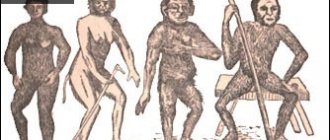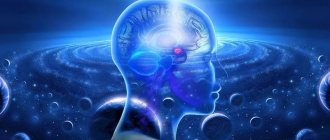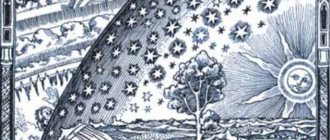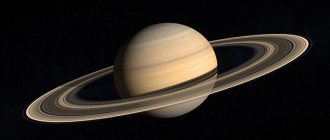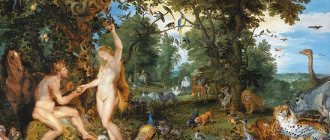How did the Universe we know come into being? And how do we explain its origin? Undoubtedly, all the other evidence and data collected over the years by cosmologists indicates that it all could have started with a “big bang.” But what if there is more?
In 1927, Belgian astronomer Georges Lemaitre became the first to propose the theory of an expanding universe (later confirmed by Edwin Hubble). He proposed that the expanding Universe could be traced back to a special point, which he called the "primordial atom", back in time. This laid the foundation for the modern Big Bang theory.
What is the big bang theory?
The Big Bang theory is an explanation, based largely on mathematical models, of how and when the universe came into being.
The cosmological model of the universe described in the Big Bang theory explains how it initially expanded from a state of infinite density and temperature known as a primordial (or gravitational) singularity. This expansion was followed by cosmic inflation and a sharp drop in temperature. During this phase, the Universe inflated at a much greater speed than the speed of light (1026 times).
Subsequently, the Universe was heated to such an extent that elementary particles (quarks, leptons, etc.) before a gradual decrease in temperature (and density) led to the formation of the first protons and neutrons.
Within minutes of expansion, protons and neutrons combine to form the primordial nuclei of hydrogen and helium-4. The estimated radius of the observable Universe during this phase was 300 light years. The first stars and galaxies appeared approximately 400 million years after this event.
The most important element of the Big Bang model is the cosmic microwave background radiation (CMB), which is electromagnetic radiation left over from the origin of the Universe. The CMB remains the most compelling evidence of a big bang.
While the theory remains widely accepted across the scientific spectrum, several alternative explanations, such as a stationary universe and eternal inflation, have gained traction over the years.
Probability of a random appearance of a person
In order to obtain an estimate of the probability of the appearance of a person, we note that the human genotype is biochemically mainly determined by proteins - enzymes. In turn, each protein is encoded by a separate gene. In total, there are up to 110,000 different types of them in the human body. For the average gene, consisting of a backbone of 1800 nucleotides, only approximately 10–20% of the total nucleotide bases remain unchanged during enzyme activity.
Although the latter consideration increases the probability of the appearance of a single gene once in the entire history of the Earth, it nevertheless turned out to be a negligible value, lying between 4.3*10–109 and 1.8*10–217. Consequently, the entire age of the Universe is not enough to enable us to sort through all possible combinations of the nucleotide base during its existence.
The probability of the formation of an entire human chromosome containing the entire set of genes by chance is simply confusing: it ranges between 10–12,000,000 and 10–24,000,000. Apparently, the random appearance of a person is no more real than, for example, the possibility of typing up a world encyclopedia with the help of an explosion in a printing house.
The theory of eternal inflation
The concept of inflation was introduced by cosmologist Alan Guth in 1979 to explain why the universe is flat, which was missing from the original Big Bang theory.
Although Guth's idea of inflation explains a flat universe, it created a scenario that does not allow the universe to escape this inflation. If this were so, the reheating of the Universe would not have occurred, nor would the formation of stars and galaxies.
This particular problem was solved by Andreas Albrecht and Paul Steinhardt in their "new inflation". They argued that the rapid expansion of the universe occurred in just a few seconds before stopping. He demonstrated how the Universe can rapidly inflate and heat up at the same time.
The concept of "eternal inflation", or the theory of chaotic inflation, was introduced by Andrei Linde, a professor at Stanford University. It was based on previous work by Steinhardt and Alexander Vilenkin.
The theory states that the inflationary phase of the universe continues forever; this is not the end for the Universe as a whole. In other words, cosmic inflation continues in some parts of the Universe and stops in others. This leads to a multiverse scenario in which space is broken up into bubbles. It's like a universe within a universe.
In the multiverse, different laws of nature and physics may apply in different universes. So, instead of a single expanding cosmos, our Universe could be an inflationary multiverse with many small universes with different properties.
However, Paul Steinhardt believes that his theory of "new inflation" does not lead or predict anything, and argues that the concept of a multiverse is a "fatal flaw" and unnatural.
Six days of creation
The Bible states that the world was created by God in six days. In Christianity there were and are supporters of a literal understanding of the six days of creation. According to this version, the alternation of day and night before the creation of the heavenly bodies occurred as a result of the action of the primeval Divine light.
There is also a figurative interpretation of how God created the earth in 6 days. According to him, God created the world in six epochs, not a day. This opinion is based on the polysemy of the Hebrew word “yom,” which in the Bible refers to the “days” of creation. This word means not only a day, but also a certain period of time, an interval.
However, the mystery of the universe lies beyond human experience and science. Therefore, we cannot judge the duration of creation. The Bible is designed to convey to us not natural scientific, but religious truths.
First day of creation
The beginning of the creation of the world represents the creation by God of heaven and earth, that is, the angelic world and matter, the basis of physical existence. But this matter was in emptiness and darkness, and only “the Spirit of God hovered over the waters” (Genesis 1, 2). These lines contain an indirect reference to the plurality of persons of God, that is, to the Holy Trinity. The Holy Spirit is presented as an independent person who participated in the creation of the world.
The Monk Ephraim the Syrian in his “Interpretation of the Holy Scriptures” expresses the idea that
“The Holy Spirit warmed, fertilized and made the waters generative.”
Water is indicated as the main, life-giving element. It was not the H2O we are used to. It was a primitive state of matter, a formless, unstructured mass that did not yet have space. But at the same time it became the basis of the world. In Christianity, water has a special meaning. It is in it that Baptism is performed as a sacrament of renewal and birth into spiritual life.
On the first day, God created light, separated it from darkness and called them day and night. The heavenly bodies had not yet been created, it was the Primordial Light. The darkness began to periodically give way to light. This is how the alternation of day and night was established, which allows man and every living creature to restore and maintain their strength.
Second day of creation
On the second day, airspace, the physical sky, was created. It is called the word “firmament”, since in ancient times the firmament was often compared to a tent. Thus, a barrier was created between the earth, which was still under water, and space. Apparently, on the second day, God created the atmosphere of our planet, protecting it from cosmic radiation. Thus, the existence of all living things was ensured.
Third day of creation
On the third day, by the will of God, the land on earth was separated from the water. It was probably then that the planet Earth with its continents, islands, mountains, plains, rivers and oceans was finally formed. Also, the first form of life appeared on earth - various types of vegetation that can reproduce themselves. This is how diverse organic life appeared.
The creation of the plant world before the appearance of the heavenly bodies, at first glance, seems to be a contradiction: how can plants exist without the Sun? However, this is an apparent contradiction. As has already been said, before the Sun there was the Primordial Light. The Sun only brought to maturity what had already been produced with the participation of the Primordial Light.
Saint Basil the Great writes in “The Six Days”:
“The earth is decorated before the sun, so that those who go astray will stop worshiping the sun and recognizing that it gives the cause of life.”
Fourth day of creation
On this day the celestial bodies were created: the Sun, the moon and the stars. They began to illuminate the earth. It also became possible to separate day from night, measure days, months and years, and keep track of time. In Genesis, these celestial objects do not have a name, they are only called the “great and small luminaries.”
Such a description is intended to protect the human mind from the pagan deification of the sun and moon. In addition, the centricity of the Earth in the created world was emphasized. Man needed time calculation for the liturgical calendar. To know when to make which sacrifice and offer prayer. And here the heavenly bodies serve only as assistants to man in serving God.
Each day says: “And God saw that it was good.” These words express the idea that everything created by God is perfect and is in harmony with each other. As St. Basil the Great wrote in “Conversations on the Sixth Day,”
“Our God created nothing either in excess of what was needed, or insufficient in anything necessary.”
Fifth day of creation
The creation of the world continued with God creating different types of birds and fish. The Creator blessed them to multiply and fill the water and sky. A new, higher, animate life form has emerged that can move and feel.
God created animals “according to kinds.” Each type of creature had its own continuity of generations with the preservation of basic external characteristics and the impossibility of transforming one species into a fundamentally different one. Based on the biblical concept of “genus,” Carl Linnaeus created a classification of living organisms in the 18th century.
Sixth day of creation
On this day, animals living on land were created by God. They filled the earth, but the planet needed a higher creation, a person who could take care of nature and be in communion with God. God created man from the dust of the earth and breathed life into him. The Creator created him in His image, rational and free, with an immortal soul. By this He elevated man above all previous creation. With our physical body we belong to the visible, material world. An immortal soul - to the invisible, spiritual world. The main goal of human existence is to be in complete harmony with God.
The Holy Fathers, including Saints Gregory the Theologian, John Chrysostom, Gregory of Nyssa, in their interpretations of the Book of Genesis noted that God honored man by bringing him into the world last, when everything was ready for his existence. The earth, as if it were a royal monastery, was prepared and decorated in advance for its Lord. Thus, the creation of the world occurred gradually and nature, as if by steps, ascends from small to great.
However, God created the world not only for human consumption. Contemplating the wealth and beauty of the Universe, a person learns the power of the Creator, His wisdom and goodness, by which He gave man this world.
Conformal cyclic model
Roger Penrose, November 6, 2005
The conformal cyclic cosmology (CCC) model suggests that the Universe goes through repeating cycles of the big bang and subsequent expansions. The general idea is that the "big bang" was not the beginning of the universe, but rather a transitional phase. It was developed by theoretical physicist and mathematician Roger Penrose.
Penrose used the FLRW (Friedman–Lemaitre–Robertson–Walker) multiple metric sequences as the basis for his model. He argued that the conformal boundary of one FLRW sequence could be attached to the boundary of another.
The FLRW metric is the closest approximation to the nature of the Universe and is part of the Lambda-CDM model. Each sequence begins with a big bang, followed by inflation and subsequent expansion.
The cyclic or oscillating model, in which the universe repeats itself over and over again in an indefinite cycle, first came into focus in the 1930s when Albert Einstein explored the idea of an “eternal” universe. He believed that after reaching a certain point, the Universe begins to collapse and ends with a Big Crunch before going through a Big Bounce.
Right now there are four different versions of the cyclic model of the Universe, one of which is conformal cyclic cosmology.
Creationism: God created everything
Creationism
Among all the theories about the origin of the Universe, this one appeared first. A very good and convenient version, which, perhaps, will always be relevant. By the way, many physicists, despite the fact that science and religion often seem to be opposite concepts, believed in God. For example, Albert Einstein said:
“Every serious natural scientist must be in some way a religious person. Otherwise, he is not able to imagine that the incredibly subtle interdependencies that he observes were not invented by him. In the infinite universe the activity of an infinitely perfect Mind is revealed. The common idea of me as an atheist is a big misconception. If this idea is drawn from my scientific works, I can say that my scientific works are not understood."
Albert Einstein
Mirage of a 4D black hole
A study conducted by a team of researchers in 2013 suggested that our universe may have arisen from debris ejected from a collapsed four-dimensional star or black hole.
According to cosmologists involved in the study, one of the limitations of the Big Bang theory is to explain the temperature equilibrium found in the Universe.
While most scientists agree that inflation theory provides an adequate explanation for how a small patch of uniform temperature would rapidly expand into the Universe we see today, the team found it implausible due to the chaotic nature of the Big Bang.
To solve this problem, the team proposed a model of the cosmos in which our three-dimensional universe is a membrane, floating inside a four-dimensional “bulk universe.” They argued that if there were four-dimensional stars in a four-dimensional "bulk universe", then they would most likely collapse into four-dimensional black holes. These 4D black holes would have a 3D event horizon (just like 3Ds have a 2D event horizon), which they called a "hypersphere".
When the team simulated the collapse of a 4-D star, they found that the ejected debris from the dying star likely formed a 3-D membrane around this 3-D event horizon. Our Universe could be one of these membranes.
The "four-dimensional black hole" model of the cosmos actually explains why the temperature in the Universe is almost uniform. It could also provide valuable insight into what exactly triggered cosmic inflation seconds after it occurred. However, a recent observation by ESA's Planck satellite revealed small variations in the temperature of the cosmic microwave background (CMB). These satellite readings differ from the proposed model by about four percent.
Perfection of the design of the human body
Yes, indeed, man has always stood in amazement at the perfection and harmony of the world around him. But the very structure of the human body is truly worthy of no less admiration. It surpasses in complexity everything else combined. Consider, for example, the amount of information the human brain can contain. It is estimated at a number between 1010 and 1015 bits. Moreover, the lower figure assumes that on average 1 bit of information is contained in each of the 1010 “cells” of human memory. The computational speed of the human brain is estimated at between 10 and 1000 gigaflops. The minimum speed of 10 gigaflops is determined simply by the speed with which the eye processes information before sending it to the brain, without taking into account all the other diverse activities of the human intellect. For comparison, one of the most powerful computers today, like the Cray-2, has a speed of only 1 gigaflop and a memory capacity of 2 * 1010 bits, which is 10 to 1000 times less than that of a person.
However, the human brain is most likely deliberately limited by the Creator in its capabilities.
Therefore, the best illustration is provided by simpler things, such as the chains of deoxyribonucleic acid (DNA) that are contained in every cell of the human body. These DNA strands carry information about all parts of the human body - from the tips of the fingers to the roots of the hair. Moreover, the ability of DNA to store information is so effective that all the information necessary to describe all types of organisms that have ever existed on our planet can fit in a teaspoon, and there will still be room to contain all the books ever written.
It seems that to specialists working in this field of science, the idea of “automatic” evolution based on the action of random forces should seem simply unnatural.
Plasma Universe Theory
Our current understanding of the Universe is mainly influenced by gravity, in particular Einstein's General Theory of Relativity, which cosmologists use to explain the nature of the Universe. Coincidentally, like most things, scientists have been considering an alternative to gravity for many years.
Plasma cosmology (or plasma universe theory) suggests that electromagnetic forces and plasma play a very important role in the universe instead of gravity. Although this approach has many different variations, the basic idea remains the same; every astronomical body, including the Sun, stars and galaxies, is the result of some electrical process.
The first prominent theory of the plasma universe was proposed by Nobel laureate Hannes Alfven in the late 1960s. He was later joined by Swedish theoretical physicist Oskar Klein to develop the Alfvén–Klein model.
The model is built on the assumption that the Universe supports equal amounts of matter and antimatter (this is not true, according to modern particle physics). The boundaries of these two areas are marked by cosmic electromagnetic fields. Thus, the interaction between them will result in the formation of plasma, which Alfvén called "ambiplasma".
According to theory, such plasma should form large areas of matter and antimatter throughout the Universe. In addition, it has been suggested that our current location in space should be in a part where there is much more matter than antimatter - thus solving the problem of matter-antimatter asymmetry.
How are stars born?
It has been scientifically proven that the cores of stars act as a kind of thermonuclear reactors, where heavier chemical elements are synthesized from light chemical elements. In particular, carbon is gradually formed from helium, and the latter is formed from hydrogen.
The time during which this or that star will live has also been established. The more massive the celestial body, the more energy it produces. If our Sun can exist for about 10 billion years, then giant stars are able to maintain a stable core structure for not so long. In turn, dwarf stars, whose mass is equal to half the Sun, can live about 100 billion years.
When thermonuclear reactions end, stars “shed” the top layer of matter. The process is accompanied by a massive explosion releasing a huge amount of energy. Supernovae are formed from massive stars. The space around the dead sources of smaller thermonuclear reactions is filled with gaseous nebulae and free matter.
We found out how stars die. But what leads to the birth of new heavenly bodies? They are formed as a result of compression of gas clouds and matter that remained after the explosion of the previous star. In many ways, the process is shrouded in mystery because it cannot be tracked over time. After all, this could take billions of years.
Slow Freezing Theory
Decades of mathematical modeling and research have led cosmologists to the reasonable conclusion that our Universe arose from a single point of infinite density and temperature, called a singularity.
The subsequent expansion of the Cosmos allowed it to cool, which led to the formation of galaxies, stars and other astronomical objects. However, as we know, the standard Big Bang model did not go unnoticed, and one such complex theory was proposed by Christoph Wetterich, a professor at the University of Heidelberg in Germany. Wetterich argued that the Universe we know today may actually have begun as cold and tenuous, awakening from a long freeze. Over time, the fundamental particles in the early Universe became heavier and the gravitational constant decreased.
Additionally, he explained that if the particle masses increase, radiation from the early Universe can make space appear hotter and move away from each other, even if it is not.
The main idea of Wetterich's cosmic Slow Freeze model is that the Universe has neither a beginning nor a future. Instead of a hot Big Bang, the theory advocates a cold, slowly evolving Universe. According to Wetterich, the theory explains density fluctuations in the early Universe (primordial fluctuations) and why dark energy dominates our current cosmos.
Much ado about nothing
What happens if you flip a coin? It will most likely fall, but if you throw it far enough, it will fly away and not return. The energy of a tossed coin consists of two quantities: “positive” kinetic energy T = mv²/2 (where m is the mass of the coin, and v is the speed of its movement. - Note T&P
) and the “negative” force of gravitational attraction U = –GMm/R (where G is the gravitational constant, M is the mass of the Earth, and R is the distance between the centers of mass of the Earth and the coin. -
Note T&P
). In the end, it all comes down to a kind of accounting: if the second value is greater than the first, the coin will fall to the ground, if on the contrary, it will fly away. And if we can do similar calculations for a coin, then we can do them for the entire Universe.
This image shows the origin of the Universe:
Almost the same thing happens to all galaxies, so to determine their future, it is enough to determine the future of one of the galaxies - for example, the one indicated by a question mark. As with a coin, the energy with which it moves is determined by kinetic energy and gravitational attraction. If the first is greater than the second, the Universe will expand indefinitely; if the second is greater than the first, the universe will eventually collapse.
It turns out that the ratio of these two quantities is the same Ω that we talked about at the beginning (the ratio of the density of the Universe to the critical density). We already know that we live in a flat Universe, which means Ω = 1. Consequently, the energy with which the Galaxy moves away from the center of the Universe is equal to the energy that pulls it back - and this applies to all galaxies in the Universe. It turns out that their total energy is zero - that's what happens if you create the Universe out of nothing.
Hindu cosmology
Religion and science have been the best enemies since at least the days of Copernicus and Galileo. Perhaps there is no place for science when we talk about religion and vice versa. However, there is one religion whose cosmological beliefs fit well with the modern model of the Universe.
The theories of creation in Hindu mythology are widely considered to be one of the most ancient and significant of all other religious analogies. Over the years, prominent physicists and cosmologists, including Carl Sagan and Niels Bohr, have admired Hindu cosmological beliefs for their close similarities to the timelines in the standard cosmological model of the universe.
According to Hindu mythology, the universe follows an infinite cyclical pattern. This means that our current universe will be replaced by an infinite number of universes. Each iteration of the Universe is divided into two phases - "kalpa" (or day of Brahma) and "pralaya" (night of Brahma), and each lasts 4.32 billion years. According to Hindu mythology, the age of the universe (8.64 billion years) exceeds the estimated age of the solar system.
Creation of the world according to the Bible
Throughout history, man has been interested in how the creation of the world is revealed in the Old Testament. The creation of the world is described in Genesis, the first book of the Old Testament and the entire Bible.
According to Christian and Jewish tradition, the author of the book of Genesis is the prophet Moses. This text contains 50 chapters and about one and a half thousand verses. The Book of Genesis represents the source of the Christian understanding of the origin of the world. It also contains legends about the ancient history of mankind (about Adam and Eve, their fall), the ancestors of the Jewish people (Abraham, Isaac, Jacob) and their descendants.
God's creation of the world (medieval mosaic)
Stationary Universe
The steady-state model states that the observable Universe remains unchanged at any place and at any time. In a universe that is forever expanding, matter is continually created to fill space.
According to the model, galaxies and other large astronomical bodies near us should appear similar to those far away. However, the Big Bang tells us that distant galaxies should appear younger than those in the immediate vicinity (as seen from Earth) because light takes much longer to reach us.
The idea of a steady state was first proposed in 1948 by cosmologists Hermann Bondi, Fred Hoyle and Thomas Gold. She started from a perfect cosmological principle, which itself states that the Universe, no matter where you look, is the same, and it will always be the same.
The theory of stationary states gained wide popularity in the early and mid-20th century. However, by the 1960s it was largely abandoned by the scientific community in favor of the Big Bang following the discovery of the cosmic microwave background.
Multiverse
This idea of the Universe speaks of the multiplicity of parallel worlds. Back in the 12th century, the famous philosopher Fakhruddin al-Razi suggested that beyond all things there are other realities. This point of view today increasingly finds approval in metaphysics.
In popular culture, multiverse theory is the basis of science fiction. Such an explanation of the structure of the Universe served as the idea for the creation of a whole host of feature films, for example, the epic “Star Wars”.
A hypothesis makes any events and outcomes real. At the same time, it is believed that individual parts of the multiverse interact with each other and intersect to a certain extent.
solar system
Okay, you say. This concerns the Earth. But perhaps there is something more suitable for us in the solar system? The answer is no. Leave Earth's atmosphere and you'll quickly die in the vacuum of space. And even if zero pressure does not kill you, the scorching heat of the Sun, frost in the shade or cosmic radiation will finish you off anyway.
Hm. What are things like on other planets? In general, yes. You would burn or freeze on Mercury. They would just freeze on Pluto. Or they would suffocate and only then freeze to death on Mars. Saturn, Jupiter, Neptune or Uranus have no surface at all. And their companions are deathly cold. What about Venus? You can't freeze on this planet. You can only burn and be crushed by the monstrous atmospheric pressure.
Overall, it's clear that the rest of the solar system doesn't look like a very good place for human life. OK. But what is there - in deep space?

